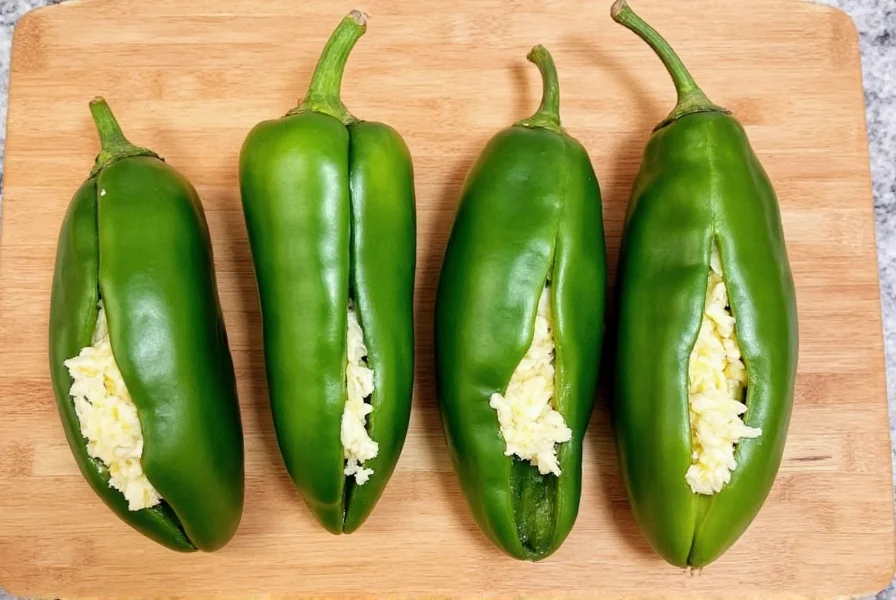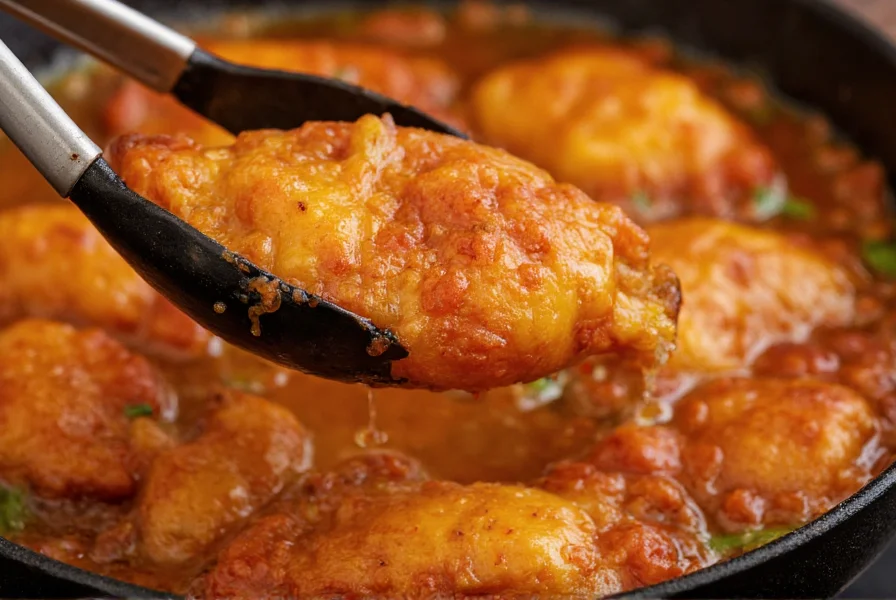If you've ever wondered how to make chili relleno that rivals your favorite Mexican restaurant, you're in the right place. This authentic recipe delivers perfectly roasted poblano peppers stuffed with melted cheese, encased in a delicate, golden batter that stays crisp without becoming greasy. The secret lies in proper pepper preparation, the right cheese selection, and mastering the egg batter technique that defines authentic chili relleno.
What Makes Authentic Chili Relleno Special
Unlike many simplified versions you'll find online, traditional chili relleno requires careful attention to technique. The poblano peppers must be roasted until evenly charred, then steamed in a covered bowl to loosen the skin for easy removal. The cheese filling should melt beautifully without leaking, and the batter must be light enough to crisp perfectly during the brief frying time. Getting these elements right transforms this dish from ordinary to extraordinary.
Essential Ingredients for Perfect Chili Relleno
The beauty of chili relleno lies in its simplicity. You only need quality ingredients in the right proportions:
| Ingredient | Traditional Amount | Key Purpose |
|---|---|---|
| Fresh poblano peppers | 4 medium | Main component, should be firm with smooth skin |
| Queso fresco or Monterey Jack | 8 oz | Traditional melting cheese that holds shape when stuffed |
| Egg whites | 4 large | Creates light, crispy batter when properly whipped |
| All-purpose flour | 2 tbsp | Helps batter adhere to stuffed peppers |
| Vegetable oil | 2 cups | For frying at proper temperature (350°F/175°C) |

Step-by-Step Preparation Guide
1. Roasting and Preparing the Poblano Peppers
Properly roasting the peppers is the most crucial step in how to make chili relleno that maintains its structure. Hold each poblano over an open gas flame or under a broiler, turning frequently with tongs until the skin is completely blackened and blistered on all sides (about 8-10 minutes total). Immediately transfer to a covered bowl or sealed plastic bag for 10 minutes to steam, which loosens the skin. Carefully peel off the charred skin while preserving the pepper's integrity—don't rinse under water as this removes flavor.
2. Creating the Perfect Cheese Filling
While many recipes use pre-shredded cheese, authentic chili relleno preparation method requires cheese that melts slowly. Queso fresco is traditional, but Monterey Jack works well for beginners. Cut your cheese into long, thin strips that will fit inside the pepper cavity. Avoid overfilling, which causes the pepper to split during frying. For best results, chill the stuffed peppers for 15 minutes before battering to help the cheese maintain its shape.
3. Mastering the Egg Batter Technique
The signature light, crispy coating comes from properly prepared egg whites. Separate 4 eggs, ensuring no yolk contaminates the whites. Whip the whites with a pinch of salt until they form stiff peaks that don't collapse when the bowl is tilted. Gently fold in 2 tablespoons of flour. The batter should be thick enough to coat the back of a spoon but still pourable. This easy homemade chili relleno batter creates the perfect golden crust without absorbing excess oil.
4. Frying to Perfection
Heat 2 inches of vegetable oil in a heavy skillet to 350°F (175°C)—use a thermometer for accuracy. Lightly dust each stuffed pepper with flour, then dip in the egg batter, coating completely. Fry 2-3 peppers at a time for 2-3 minutes per side until golden brown. Drain on a wire rack (not paper towels) to maintain crispness. Proper temperature control is essential for how to prevent chili relleno from falling apart during cooking.

Pro Tips for Restaurant-Quality Results
- Pepper selection: Choose firm, dark green poblanos without wrinkles or soft spots—larger peppers are easier to stuff
- Cheese alternatives: For a richer flavor, try a blend of Oaxaca and Asadero cheeses, which melt beautifully while maintaining structure
- Batter consistency: If your batter is too thin, add a bit more flour; if too thick, add a few drops of water
- Frying temperature: If the oil is too hot, the batter browns before the pepper heats through; too cool and the rellenos absorb excess oil
- Serving immediately: Chili relleno is best served fresh from the fryer when the exterior is crisp and the cheese is perfectly melted
Traditional Accompaniments
Serve your authentic Mexican chili relleno recipe with warm corn tortillas and one of these traditional accompaniments:
- Tomato salsa: Blend 2 cups roasted tomatoes, 1/2 white onion, 2 garlic cloves, and cilantro
- Crema: Thin Mexican crema with a bit of milk for drizzling
- Rice and beans: Simple Mexican red rice and refried beans complete the meal
Common Variations to Explore
Once you've mastered the traditional chili relleno recipe, try these authentic variations:
- Chile en nogada style: Add ground beef, fruits, and nuts to the cheese filling, then serve with walnut cream sauce
- Vegetarian option: Mix cheese with sautéed mushrooms, spinach, and corn for a hearty filling
- Seafood version: Stuff with crab or shrimp mixed with cheese for coastal Mexican variation
- Green sauce: Replace tomato salsa with tomatillo salsa verde for a tangier profile
Troubleshooting Common Problems
Even experienced cooks encounter issues with chili relleno cooking tips for beginners. Here's how to solve common problems:
- Peppers splitting: Don't overfill, and ensure peppers are properly roasted and peeled (the skin helps maintain structure)
- Batter not sticking: Lightly flour the stuffed pepper before dipping in batter, and ensure egg whites are properly whipped
- Soggy exterior: Oil temperature is too low—use a thermometer and maintain 350°F (175°C)
- Undercooked peppers: Roast peppers thoroughly until completely blackened for proper tenderness
Frequently Asked Questions
Can I bake chili relleno instead of frying?
Yes, though frying produces the traditional texture. For baking, preheat oven to 400°F (200°C), place battered rellenos on a greased baking sheet, and bake 15-20 minutes until golden. The texture will be less crisp but still delicious, making this a good option for those seeking a lighter vegetarian chili relleno preparation method.
What's the best cheese for stuffed chili relleno?
Queso fresco is traditional but doesn't melt well. For the best results in how to make chili relleno, use a blend of 70% queso fresco for flavor and 30% Monterey Jack for meltability. Oaxaca cheese also works beautifully as it melts while maintaining some structure. Avoid pre-shredded cheeses which contain anti-caking agents that prevent proper melting.
How do I store and reheat leftover chili relleno?
Store cooled chili relleno in an airtight container in the refrigerator for up to 3 days. To reheat without losing crispness, place on a wire rack in a 350°F (175°C) oven for 8-10 minutes. Avoid microwaving as this makes the batter soggy. For best results with your authentic chili relleno recipe, consider making smaller batches to enjoy fresh.
Can I prepare chili relleno ahead of time?
Yes, you can complete several preparation steps ahead. Roast and peel peppers up to 2 days in advance (store in refrigerator). Stuff peppers and refrigerate for up to 12 hours before battering. For the easiest homemade chili relleno batter, whip egg whites just before frying as they lose volume over time. Complete assembly and frying should happen immediately before serving for best texture.










 浙公网安备
33010002000092号
浙公网安备
33010002000092号 浙B2-20120091-4
浙B2-20120091-4